by Norbert Schiller
Othmar Pferschy was born in Graz, Austria in 1898 during the time of the Austro-Hungarian Empire. He took up photography in his early 20s while working as an apprentice for a photographer in Vienna. In 1926, he took a holiday trip to Turkey aboard the Orient Express. During his stay in Istanbul, Pferschy saw an advertisement in a local newspaper for a photography assistant. Pferschy applied and got the job at Foto Francais, a studio in Pera run by Jean Weinberg, a Romanian Jew.
Not much is known about Jean Weinberg or his move to Istanbul. We do know that by the time Pferschy arrived in the city, Weinberg was already well established. The earliest photo I have seen taken by Weinberg is one of then Field Marshal Kemal Ataturk and Brigadier General Ismet Pasha before the Battle of Dumlupinar in August 1922, the last engagement in the Greco-Turkish war (1919-1922) and a defining moment in Turkish history. On 30th August, 1922 the Turkish army under Ataturk’s command liberated Anatolia from the Greeks for the last time. After the victory, Ataturk went on to become Turkey’s first president.
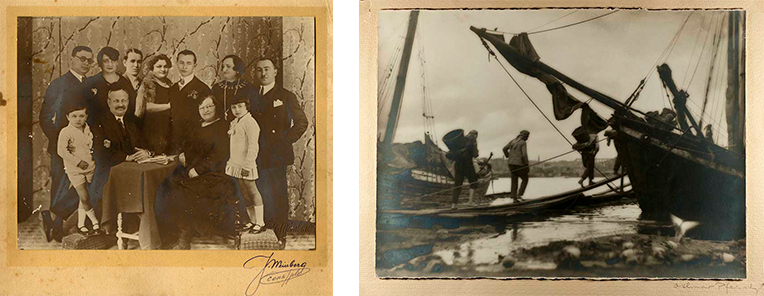
A studio photograph of a Jewish family in Istanbul from the 1920s. Coal porters on the Golden Horn in the 1930s. Phot. (L) Jean Weinberg, Phot. (R) Othmar Pferschy
Even though Weinberg continued to photograph Ataturk, most of his time was focused on his studio work in Istanbul. Weinberg’s link to the presidency was cut, however, after he got into a tussle with presidential photographer Cemal Isikel, whose tripod he kicked during the Republic Day celebrations in 1929. After that incident, Weinberg was banned from photographing Ataturk.
Pferschy worked for Weinberg until 1931 and then opened his own studio in Istanbul. On 11 June 1932, the Turkish parliament passed Act 2007 (concerning Arts and Occupations Reserved for Turkish Citizens), which prohibited foreigners from working as photographers. The ruling ended a tradition that dated back to the middle of the 19th century when numerous European photographers moved their studios to Constantinople (Istanbul). Abdullah Freres and Pascal Sebah were two of the most successful foreign run studios that had opened in Constantinople in the mid 19th century.
Shortly after the ban went into effect, Pferschy and Weinberg traveled together to Egypt. Pferschy was asked to teach photography to Prince Muhammad Abdel Moneim, who was residing in Alexandria at the time. Prince Abdel Moneim was the son of the former Sultan of Egypt, Abbas Helmi II.
After their visit to Egypt, the two photographers decided to abandon Turkey for good and move their studios to Cairo. However, just before Pferschy was about to leave he got an offer in Turkey that he could not refuse. When Vedat Nedim Tor, director of the state printing office, failed to find a suitable Turkish photographer, he asked Pferschy to be the official photographer for the institution. Between 1935 and 1940 Pferschy moved to Ankara, the new Turkish capital, and from there he traveled throughout the country taking photos of landscapes, villages, cities, archeological sites, people, and most importantly the achievements of the new “Kemalist Turkey.” The photographs were printed in numerous magazines, books, and calendars, made into postcards, and used on stamps and bank notes. In 1936, the state-printing house featured Pferschy’s work in a large printed photo album titled Turkey in Pictures. The book had over 100 photographs with a short introduction in Turkish, French, English, and German.

Women in “western” dress and a strong military was the image the new “Kemalist” Turkey wanted to portray to the outside world in the 1930s. Phot. Othmar Pferschy
It’s ironic that Pferschy, a foreigner, was hired to showcase the new image of Kemalist Turkey at a time when foreigners were legally banned from working in photography. However, Pferschy would later pay a high price for this high profile appointment, which would force him in the end to leave the country.
It is not clear whether Weinberg returned to Turkey and, if so, for how long. What is known is that he opened a photographic studio in the center of Cairo in the mid 1930s on the ground floor of the Davies Bryan building on Emad el Dine Street. The first photos I saw taken by Weinberg in Egypt were of King Farouk and Queen Farida’s 1938 wedding. Although I have not seen any of his earlier photographs of Egypt, he must have been already well established or the royal court would not have hired him for such a momentous event.
At about the same time that Turkey in Pictures was published, Othmar Pferschy got married to Evengelia Seimiri. A year later the couple had a daughter and in 1939 they had twin boys. In 1940, Pferschy was drafted into the German army (Austria became part of Germany following the Anschluss in 1938) and was sent to the Norwegian front to work as a photographer. Later, he was sent to Berlin to work for the German Propaganda Office. When the war ended, Pferschy returned to Turkey
During the war years Weinberg’s studio had a steady stream of foreign clients, particularly soldiers and others involved in the war effort. Some of the photographs I feature in the exhibition show British and other Allied soldiers. Based on his clientele it was obvious that Weinberg was a keen supporter of the Allied war effort.

A shop selling sweets is now at the same location where Jean Weinberg’s studio was in the Davies Bryan building on Emad el Dine Street. An anti-British demonstration can be seen passing the Weinberg Studio in the 1930s. Phot. (L) Norbert Schiller
One of the last photographs I feature in this exhibition is of Nerriman Sadik, shortly before she became Farouk’s second wife and queen of Egypt. It’s obvious that the palace wanted to have a sophisticated portrait of the future queen. It is not clear why Weinberg was chosen, but one could only assume that it was due to his reputation as one of the very best portrait photographers at the time. Riad Shehata was another favorite of the palace and after his death in 1942 his studio continued to maintain a close connection with the royal family.
Upon his return to Turkey in 1947, Othmar Pferschy resumed working as a photographer and opened a studio in Istanbul. Pherschy applied for Turkish citizenship and, even though his wife and children were Turkish nationals, his request was denied.
Over the next decade, Pferschy moved his studio at least four times. On a few occasions Turkish photographers complained to the authorities that Pferschy was working in a field reserved only for Turkish citizens. In the beginning Pferschy was just given a small fine and left alone but eventually, as more Turkish photographers objected to his presence, his work permit was revoked and in 1969 he left the country for good.
When he left Turkey, Pherschy did not take his archives with him but left them in his sister in law’s basement. He probably thought that he would eventually return to Turkey, where he had spent 43 years of his life. Unfortunately, some of his work was destroyed when the basement flooded.
Pherschy died in Munich, Germany in 1984. In May 2005 his daughter, Astrid von Schell, also a photographer, donated what remained of her father’s collection to the Istanbul Modern Art Museum. The collection consists of 1714 negatives and 1293 prints.
Jean Weinberg continued to work after the 1952 revolution that deposed the monarchy. The last photo I have seen by him was a wedding portrait taken in 1956 but there is no trace of him after that date. I can only suspect that he left Egypt with the Jewish exodus following the 1956 Suez crises.
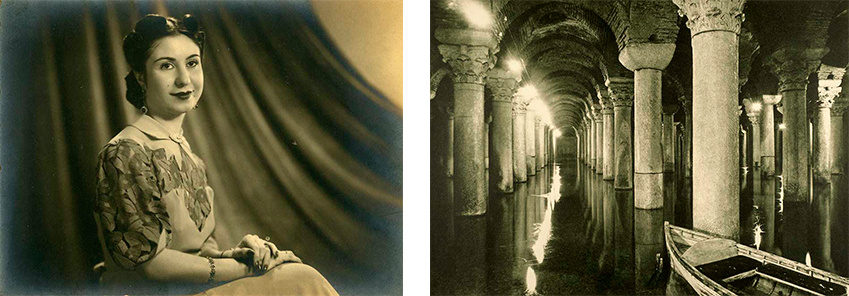
Two very distinct styles of photography. Weinberg used limited props to capture the personality of his subjects, while Pferschy was obsessed about symmetry when composing an image. Phot. (L) Weinberg, Phot. (R) Pferschy.
What distinguished Pferschy and Weinberg was their unique photographic styles. Weinberg made a career as a portrait and wedding photographer by using lighting and limited props to capture his subjects’ personalities. Pferschy, on the other hand, was a documentarian specialized in architecture and landscape photography. One can tell from his body of work that he was a perfectionist who worked obsessively to create a symmetry in his images through the flawless alignment of vertical and horizontal lines that left no room for distortions. It is therefore natural that he was selected to document the “new” Turkey, in spite of the nationalist fervor that created a hostile atmosphere towards foreigners.
If anyone has additional information about either Othmar Pferschy or Jean Weinberg or photographs they want to share that are relevant to this exhibition please contact me at: nschiller@photorientalist.org
References:
http://www.cornucopia.net/magazine/articles/othmars-dream
http://www.acgart.gr/acg-collection/artists/P/PfeO/PfeO-bio.htm
Books:
http://www.photorientalist.org/book-review-turkey-in-pictures/
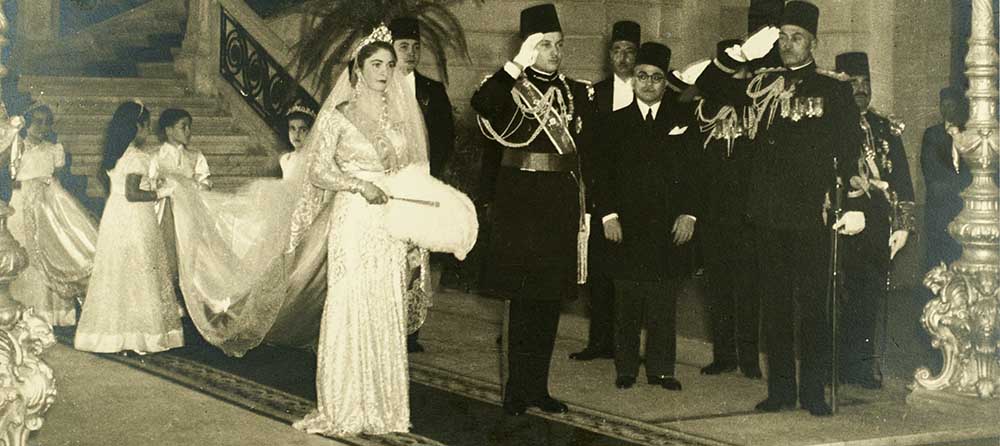
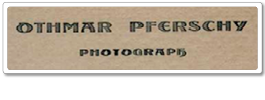
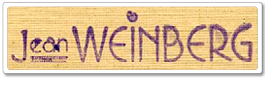

Great!
Great article!!
These are two very different in their style of photography, but each of them captivates with their pictures made with their own characteristics.
Excellent article … ! So happy to read details about Jean Weinberg and his photography technique … So proud that my parents wedding photo was taken by Jean Weinberg …
2alternate
3conjunctions
This website really stands out among similarly themed sites, for not just re-blogging beautiful pictures, but for creating new content and giving information hard to find anywhere else and for promoting fresh knowledge about the Middle East and North Africa.
Thank you very much for this story, may you be able to keep up this work!